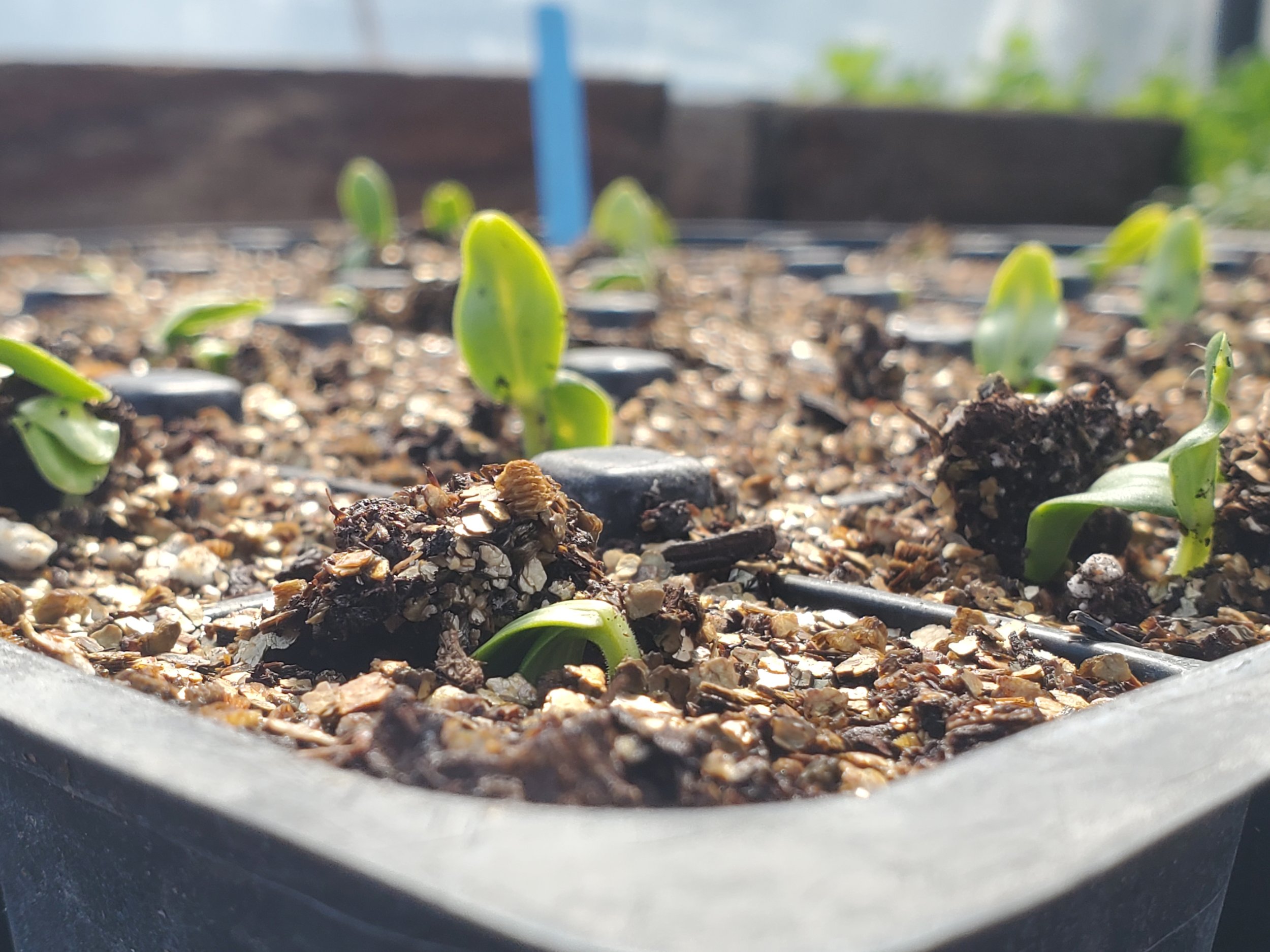
Elements of a farming ecosystem
-
Tending to soil health is the foundation of plant and human health. We opt for low-to-no-till practices that allow for vibrant microbial life and mycelial connections.
-
Our holistic ecologically based approach ensures little to no dependence on additional inputs.
We utilize natural or OMRI-listed amendments and feeds (kelp, fish, blood meal, etc) to assist plant production only if necessary. We are not certified organic as it continues to be cost-prohibitive for small-scale farmers to attain certification, however our practices align with and beyond organic requirements (organic fertilizers and pesticides still abound in the certification world).
-
We strive to balance and recognize farms are human made, but we can achieve a peaceful ecological integration with nature and reap constant food supply while regenerating the environment. No surprise, our food is so delicious the pests love them, too. We employ integrated pest management strategies to reduce pest interference and disease and increase pollinator and beneficial insect habitat and forage.
-
Water scarcity is a California norm and thus we operate with water efficiency as a constant necessity, no matter the year. Farmer Reyna began her career in water conservation and brings it well into farming. She was a Certified Landscape Irrigation Auditor and is QWEL Certified. Drip irrigation and conservation-based practices around plant-water needs is a way of life at the farm.
-
Growing a broad range of plants, flowers and herbs contributes positively to our farm ecosystem (and our passionate, unwieldy appetites). We balance consumer desires, climate adaptability, and nutritional benefit in crop planning and seed sourcing. A constantly changing, challenging task demonstrating that diversity is a dynamic concept. It’s also important sociologically. Support a woman-led, BIPOC farm that brings more diversity to our county.
-
Farming regeneratively is not quit fully achieved without fulfilling nature’s and animal cycles. However leasing land, small farm economics, all tied with limited acreage hampers this goal. But we still manage waste streams with care. Old crops are donated to local livestock ranches; leftover, “imperfect” unsold produce is donated to local nonprofit Farm-to-Pantry; many materials and farm supplies are bought used, used to death, and disposed of thoughtfully. We can’t always control who supplies the region with our needs, but we can advocate for and support those who grow, make and practice what we value, too.
-
Farming ecologically and in community takes a lot of undoing and challenging of current unsustainable, unjust aspects of our food & farm systems. It’s a lot of work we can no longer do alone. We aim to be a part of a network of responsible, socially conscious and committed producers, distributors, and purveyors so we may lift each other up in promoting food, farm & community well-being.
We acknowledge we are on the ancestral land of the Coast Miwok Tribe. Further, we participate in the “Grow-A-Row” initiative to dedicate a portion of land space to growing a crop we donate to the The Cultural Conservancy food security initiatives.







